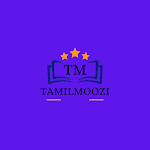One of the prominent tribal rebellions of this period occurred in Ranchi, known as
Ulugulan rebellion (Great Tumult).The Munda people were familiar with the co-operative or collective farming known as Khuntkatti (joint
holding) land system. It was totally eroded by the introduction of private ownership
of land and the intrusion of merchants and moneylenders. The Munda people were also forcefully recruited as indentured labourers to work on plantations. In the 1890s tribal chiefs offered resistance against the alienation of tribal people from their land and imposition of bethbegari or forced labour The movement received an impetus when Birsa Munda declared himself as the messenger of God. Birsa claimed that he had a prophecy and promised supernatural solutions to the problem of Munda people and the establishment of Birsaite Raj. The Munda leaders utilised the cult of Birsa Munda to recruit more people to their
cause. A series of night meetings were held and a revolt was planned. On the Christmas day of 1889, they resorted to violence. Buildings were
burnt down and arrows were shot at Christian missionaries and Munda Christian converts. Soon police stations and government officials were attacked. Similar attacks were carried out over the next few months. Finally the resistance
was crushed and Birsa Munda was arrested in February 1900 who later died in jail.
The mutiny was equally supported byan aggrieved rural society of north India.
Sepoys working in the British army were infact peasants in uniform. They were equallyaffected by the restructuring of the revenueadministration. The sepoy revolt and thesubsequent civil rebellion in various parts ofIndia had a deep-rooted connection with ruralmass. The first civil rebellion broke out in partsof the North Western provinces and Oudh.These were the two regions from which the
sepoys were predominately recruited. A largenumber of Zamindars and Taluqdars werealso attracted to the rebellions as they hadlost their various privileges under the Britishgovernment. The talukdar–peasant collectivewas a common effort to recover what they had lost. Similarly, artisans and handicrafts persons were equally affected by the dethroning of rulers of many Indian states, who were a major source of patronage. The dumping of British manufactures had ruined the Indian
handicrafts and thrown thousands of weavers out of employment. Collective anger against the British took the form of a people’s revolt.
10th Maths - 3rd Revision Question & Answer - Theni Dt - Mr Abbas Manthiri - Download here







0 கருத்துகள்